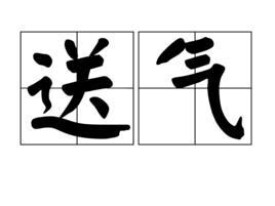送氣
送氣
語言學術語。主要指清塞音除阻階段,從聲門送出的氣流。送氣的國際音標為[ʰ]。從空氣動力學角度講,送氣主要是由下聲門壓強與口腔內部壓強不平衡導致的。送氣出現在塞音爆破(burst)以後。送氣[ʰ]與聲門清擦音一樣,都是一個類似於清母音的音素。
「送氣」一詞及其符號有時也可用於限定濁塞音的發音類型,如[dʰ]。然而「送氣濁音」通常也稱作呼吸音或咕噥音。因其發音的機理與送氣清音不同,為消除歧義,有些語言學家傾向於使用上標 [ʱ] 來表記呼吸音。
sòng qì
[動詞]◎ 送氣 sòngqì
(1) [aspirated] 發輔音時有比較顯著的氣流出來叫送氣,沒有顯著的氣流出來叫不送氣。普通話語音中的 p,t,k,q,c,ch 是送氣的; b,d,g,j,z,zh 是不送氣
(2) 的
aspiration
In phonetics, aspiration is the strong burst of air that accompanies either the release or, in the case of preaspiration, the closure of some obstruents. To feel or see the difference between aspirated and unaspirated sounds, one can put a hand or a lit candle in front of one's mouth, and say pin ([pʰɪn]) and then bin ([bɪn]). One should either feel a puff of air or see a flicker of the candle flame with pin that one does not get with bin. In most dialects of English, the initial consonant is aspirated in pin and unaspirated in bin.
息を出します
